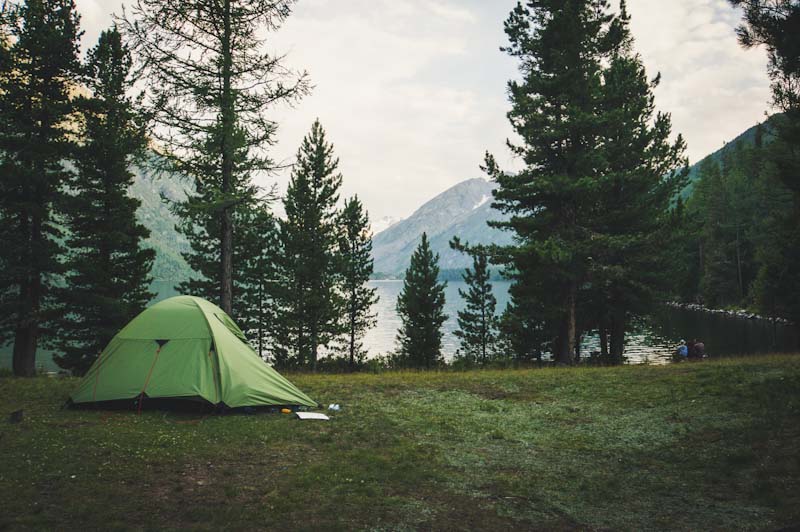After more than ten years of being in the prepping and bushcrafting “business,” I can honestly say that I’ve heard it all since almost everyone I’ve met so far wanted to share their stories and experiences in the field. Unfortunately, a lot of people are spreading misinformation when repeating the same myths over and over again.
There are many myths surrounding us, and the survival world has its fair share. We grow up with some of these myths willingly, like the one with the fat guy dressed in a red suit going down the chimney every December 24, while others we learn from movies and our fellow peers.
The problem is that most of these myths could lead to drastic outcomes, and people rarely bother checking the reality and facts behind them. Let’s look at some of these myths.
Mushrooms are a great food source in a survival situation
As a forager, I often get irritated when I hear about this one because I know that foraging is a difficult endeavor, and you should never rely only on it to procure your food. And when it comes to mushrooms, there are three major things one should keep in mind.
First, edible mushrooms have various poisonous lookalikes, and you need a lot of experience in the field to avoid making a potentially deadly mistake. Second, mushrooms are 80 to 90 percent water, and the nutritional value they provide is usually poor in a survival situation. And third, mushrooms are thermogenic, which means that your body will burn more calories trying to digest them; thus, you will consume more calories than gaining. These three facts should make it obvious that mushrooms are not an ideal survival food.
Moss can help you find your direction
Those learning about navigation will most definitely hear about this one, and most people I know are aware of this myth. I had fun with my nephews a few times because I’ve asked them to try and find north by looking for moss. They often walked in a circle around a tree, trying to figure it out.
The reality is that moss will grow all the way around a tree if it meets the right environmental conditions. Not to mention that in some environments, it could be impossible to find moss growing on trees at all. The myth that moss grows only on the north side of trees is just that, a myth, and it won’t help you navigate if you get lost. You would be better off carrying a compass and learning how to use it. And if you don’t have a compass, you can look to the sun and stars to find the right direction.
The wild food of birds and animals is also safe for human consumption
This is another dangerous survival myth that I’ve been hearing, and it can cost people their lives. The digestive systems of animals are quite different than the digestive system of humans, and we should be aware of this in our own homes. There are things we eat that are harmful to our pets, and on the other hand, our pets can consume foods that would make us sick.
However, when people see wild animals eating berries, mushrooms, and other foraged items, they somehow believe those foods are safe for human consumption as well. This is a dangerous assumption, and trying your luck with animal food can leave you very sick or worse. My grandfather used to jokingly say that every wild food is edible once. You really don’t want to test that theory.
A solar still will provide enough water in the wild
While a solar still can provide water if you are unable to find any other water source, it’s far from being a great way to procure water. Never rely only on this method to get water in the wild, and make sure you learn other water procurement methods.
And if you do want to try your luck with a solar still there are a few things you should be aware of. First, this method requires quite some effort since you need to dig a hole in the ground, procure a container and a piece of plastic and then wait for moisture to drip into the container. Second, the success of this method depends on various factors like the moisture in the ground, the climate of your area, the solidity of the ground (you may not even be able to dig without a tool), temperature, size of the hole, etc. And third, you will rarely get enough water from this method to make up for the loss of time and energy you’ve put into it.
If you get lost during the winter, eat snow if you lack water
Hydration is equally important during the winter as it is during the warmer/hotter months. Often times I’ve heard people recommending others to eat a little bit of snow if they get thirsty. This is a bad idea for a couple of reasons.
If you are dehydrated and you have a “dry mouth,” eating snow can cause tiny cuts inside your mouth since snow is made of ice crystals with sharp edges. While this happens rarely, one thing that occurs every time you eat snow, no matter how dehydrated you are, is losing your body temperature. Your body will spend energy while melting and heating the snow in your stomach to aid digestion, and you need to maintain your core body temperature if you find yourself in a survival situation.
Also, the snow might have become contaminated by atmospheric pollutants or while it sat on the ground. If you have the means, melt the snow in a container and use a water filtration method before consuming.
Drinking urine helps when you can’t procure water
This survival myth was often promoted by a certain survival celebrity, and nowadays, people swear by it because “we saw him doing it” and it must be true. Forget what you’ve seen on TV shows or YouTube videos and understand that drinking your own urine is a bad idea.
Urine contains a lot of body waste products your body needs to eliminate, and reintroducing them back into your system will concentrate them further. This will lead to serious health complications, and it will greatly reduce your chances of survival. Rather than relying on urine to quench your thirst, spend your time and energy finding an actual water source.
If you have a limited quantity of water, ration it to last until you get saved
I’ve heard this so many times it became actually funny when asking people to explain it. The main “reasoning” is that if you ration the water, you will not get thirsty that fast, and your body will last longer. This is a false assumption, and science doesn’t back it up. In fact, you need to drink as much as needed for as long as your supply lasts since you need to keep your brain hydrated.
When you do find a water source, you should drink as much as you can and find ways to carry some with you. Also, when water is in short supply, you should ration your food since your body consumes water to help digest it, and you should also avoid physical activities since you will lose body water when sweating.
Pack tampons to treat puncture wounds
I’ve seen a lot of preppers recommend this one, and I know some of them actually pack tampons in their survival bag just for this type of scenario. The myth goes that you can treat puncture wounds, including gunshots using tampons.
While tampons can be used creatively for some medical emergencies since they are sterile and could be used as a dressing, tampons are a poor choice for treating penetrating injuries. They are designed to absorb blood and not to stop the bleeding. Also, compared to proper medical items, you may need to use more than you think to obtain the same results. There are proven tools and gear for your first aid kit which serve the purpose of treating puncture wound much better than tampons, and you should invest in those if you want to have a proper medical kit.
If you get frostbite, rub the affected tissue to warm up the skin
Rubbing our hands when they get cold is a mind-driven gesture, and we do it instinctively since friction creates heat, thus warming the cold skin. However, this is the wrong approach when you get frostbite because the frozen tissue will further get damaged. Even more, the ice crystals forming inside and outside the tissue will also damage the healthy tissue near the affected area.
You should avoid rubbing or massaging frozen tissue, and you also shouldn’t apply direct heat on it. Get the person inside and warm it gradually and avoid applying pressure on the injured body parts (this is especially recommended for feet or toes). If you are confident you can keep the patient in a warm environment, you should apply moist heat to the affected tissue. Do so using a towel or piece of cloth soaked in warm water.
When you get lost in the wilderness, shelter is your number one priority
This is a survival myth that holds some truth to it, but it all depends on the circumstances. Every survival situation is different, and the needs of the person facing that situation will vary as well. If you find yourself in a cold climate, then you should spend your time and energy building a shelter and a fire to keep yourself warm. However, if you find yourself in a hot climate, your priority will be to procure enough water and make sure it lasts until your situation changes. You may easily find shade or improvise a shelter using branches, a tarp, etc., but finding water might become a challenge in such an environment.
You will need to use common sense and adjust your priorities based on your immediate needs. Never rely on a rigid set of rules, and do what you can to cover your priorities.
Concluding
Separating fact from fiction in the survival world can be difficult for the novice prepper or survivalist. There is so much false material being spread and so many survival myths being promoted that oftentimes it becomes tiresome to figure out the facts and truth behind those myths. We grew up hearing many of such myths, and some folks still blindly believe in them, even into their adulthood. It’s time to leave the past behind and bring facts to light.
Feel free to share some of the survival myths you’ve heard as well using the comment section. Together we can help dismiss some of these myths and make the world safer.









Mary-Jo Wiese | January 25, 2023
|
Thank you for this article, part info & part refresher!! I wouldn’t have even been worried abut it 15 years ago or more, But being a partly disabled 79yr old female , in this day & age , I need my own info just in case! I was more agile even 5 years ago , but I have sort of gotten complacent & left my exercising go by the wayside !!! So I guess it will be necessary to get back to it !!! With how the world is going down hill , If push comes to shove , I want to be as prepared as possible !!
Lisa | January 25, 2023
|
I agree with you. don’t think bugging out is possible for me, so i’m hunkered down. also haven’t been at it very long. That said, just learning my own backyard weeds is challenging. I may love mushrooms, but will not try foraging those. We are more able to outlast our doubting family with knowledge. Keep on, keepen on.